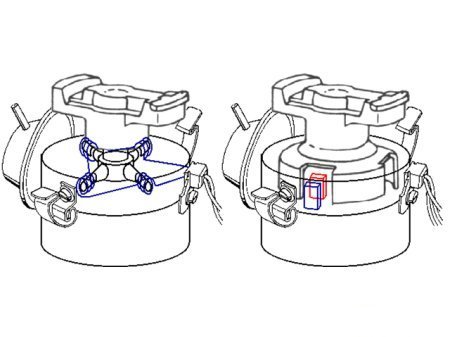
|
Transistor-Coil Ignition

Assignment
In the transistor coil-ignition system the ignition timing remains unchanged through a non-contact ignition trigger, thus avoiding wear and tear and servicing- and repair costs. Compared with the coil-ignition with
interrupter contact, it has a higher ignition voltage providing better starting when hot and cold. It is also less sensitive to dirty
spark plugs.
Function
In contrast to the conventional coil-ignition with interrupter contact and
condenser, an inductive
sensor (left) or a Hall-effect sensor (right) is built in. The Hall-effect sensor requires a power supply and has three
wires, the inductive pick-up generates a voltage, thus requirung only two wires.
The Hall-effect sensor features an air-space or a shielding metal part between the Hall-effect IC (blue) and a magnet (red) depending on the position of the segment rotor. The voltage on the control wire changes
accordingly. If metallic material is placed in the space between the magnet and the Hall-effect IC, no Hall-effect voltage is present and the primary current is switched on. When the material leaves the space the
primary current is switched off and the ignition is triggered. The segment rotor determines the maximum possible dwell-angle, which is substantially reduced however, e.g., when idling. The number of segments is
determined by the number of cylinders.
In the inductive sensor there is a star-shaped rotor, this generates an alternating current in the coil. From this, at first,
the control unit generates a rectangular wave signal, then at a certain point, through the amplifier, switches off the primary current (point of ignition).
The duration of this activation is determined by the dwell angle regulation. The dwell angle is selected so that, e.g., the current flow remains below 10 A, because the now suitable coils have less resistance
compared with the earlier ones. In addition, the dwell angle becomes smaller and smaller as the RPM rises. When the engine is running with little rews, the ignition coil current is deminished (standby current
regulation). All in all, the wasting of energy through greater heat development and also the possibility of defects occurring, is thereby avoided. 08/11
|
|